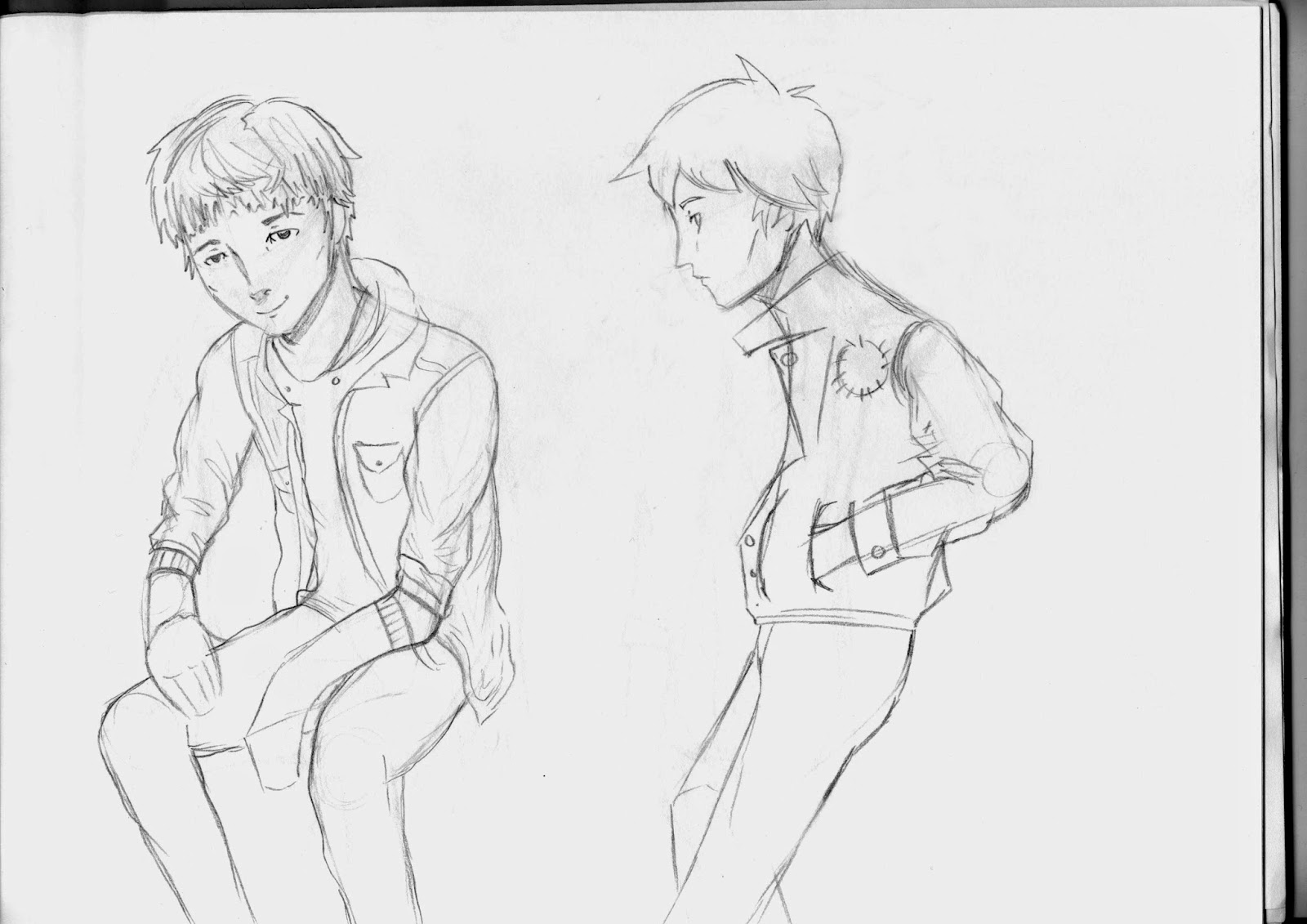I began to sketch styles that I could draw the character with, I did not want the character too detailed as I wanted it simple as to be less of a focus than the main body of work that would be in the presentation. I wanted to show examples of work that I enjoyed doing whilst on the course, such as storyboarding and character designing.
I wanted to add some animation in the powerpoint which I had to make in the form of gifs, as the mov files were too big for the powerpoint to show. I could have embedded a youtube video but I did not want to have to click play for each animation to show, I wanted the animation to flow with the presentation.
I kept the main structure of each slide quite simple as I did not want the powerpoint to look too cluttered, as when you look at a powerpoint which has a huge body of text with multiple images cluttered together, it makes it hard to read and focus on the main point of the slide. I only wanted to include a line of text at the most for the dialogue box which I would go into detail as I talk alongside the presentation.






































